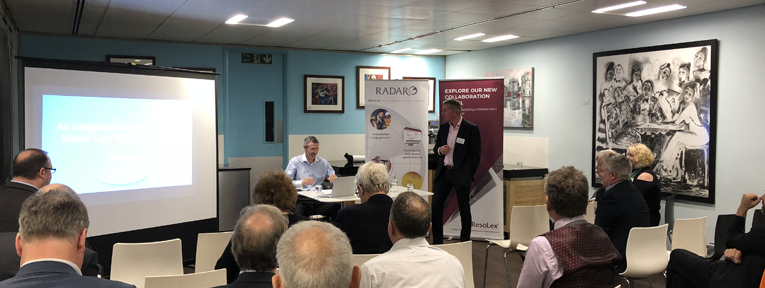Speaker: Kevin Thomas, Director of IPInitiatives
The session opened with Kevin making the statement that the UK construction industry is capable of achieving great things, but tends to be successful despite the process, rather than because of it. change gets more expensive as the design of the project progresses from design to delivery, often because there is a lack of ownership of the overall outcome. The IPI model recognises combines the two processes so that the client designers and the delivery supply chain all combine to work as a single team under an ‘alliance’ agreement.
The key features of the arrangement include
- Common selection process (OJEU) based on ability to achieve.
- New Alliance Contract creates a virtual business ‐ a Board of partners with ‘skin in the game’.
- The whole team optimise performance deciding who does what, when and how.
- Open book – pay for people and buy things separately – through a Project Bank Account.
- Work top-down from a benchmarked investment target to meet the needs.
- Supply chain is involved in all design decisions.
- Savings are achieved by stripping out processes, products and procedural waste & inefficiency.
- The team identify opportunities and risks ‐ allocating them to the party best suited.
One of the key features of the arrangement is that all of the usual insurances taken out by the different parties to a construction contract are wrapped together, to provide the client with protection against a cost overrun.

New mindset required
The process requires a significant shift in mindset by all of the participants. There are many different features to the IPI process, but one of the biggest changes is that there is no one to blame under a contract, because everyone is tied together. The process works through the following steps:
Step 1 – Establish the Need. The problem to be solved and the funding level anticipated
Step 2 ‐ Form an Advisory Team. Establish the strategic brief & success criteria, validate the investment target and select the team
Step 3 ‐ Establish the Alliance. Client and key partners bound together through an alliance contract and gain/pain share incentives who confirm the functional requirements, propose the solution and confirm the target cost
Step 4 ‐ Approval to Implement. Client & underwriter approval to develop and deliver the solution and incept the IPI policy to cover the agreed target cost
Step 5 – Implementation. Open book collaborative design, development and delivery
Step 6 – Transition to Defects Liability. Completion and proving, 12 months of soft landings and seasonal commissioning and 12 years of defect liability
Case Study – Dudley Advance II.
The IPI model has had a long gestation period, being first conceived in 2003. It has finally been tested on a live project for Dudley College. This is a higher education facility comprising five floors of lab/teaching space and a large open hanger-like space for large-scale projects. The building is stacked with innovation, and built to a high finish.
The project began in 2014 and was delivered to the client on the program for the start of the educational term and within the original cost parameters. Given the challenges that the team faced over the delivery period, it is likely that the building would have faced significant delays and would have incurred significant cost overruns, had it been built using traditional design and procurement methods.
Kevin provided the audience with a frank summary of the learning from the project. Some of the things they expected to happen include:
- A true no-blame culture would emerge
- A “best for project” focus would be adopted for solution development and problem-solving
- Supply Chain would engage, lending expertise so design happened only once
- The team would run the project on Opportunities and Risks
- The Alliance Board would function as a business board
- BIM would create better efficiency, give asset management solutions
- New processes and procedures would be created
- Behaviours would change
Some of the things that were unexpected included:
- Working within the investment target is not a core skill for many people in the industry.
- The level of facilitation, coaching and mentoring was much higher than anticipated.
- It initially took a lot of effort to get people to take leadership.
- How much support some businesses would need to adopt BIM
- Impact of adopting BIM guidance
- Limitations of the ‘normal’ programming processes
- Cost of and time to achieve policy inception
- Difficulty integrating design, delivery & commissioning activities
- The extra benefits of 4D
Summary
Having been aware for some time that the IPI pilot was running, the ResoLex community were excited to see how it would turn out. The room was therefore delighted to hear of the IPInitiatives team’s experiences, and many were keen to see how the process might be used on their future projects. Kevin was keen to point out that the process is still in its early stages, and whilst there is another pilot currently underway, there is still a long way to go before the process becomes a mainstream alternative to the traditional procurement route.
One of my main takeaways from the evening was Kevin’s observation that once the collaborative mindset took hold, the energy and desire within the team to deliver was a joy to work with. Many words are written and spoken about the need for more collaboration in the construction industry. Kevin and his fellow directors have shown us how it can actually work in practice!
